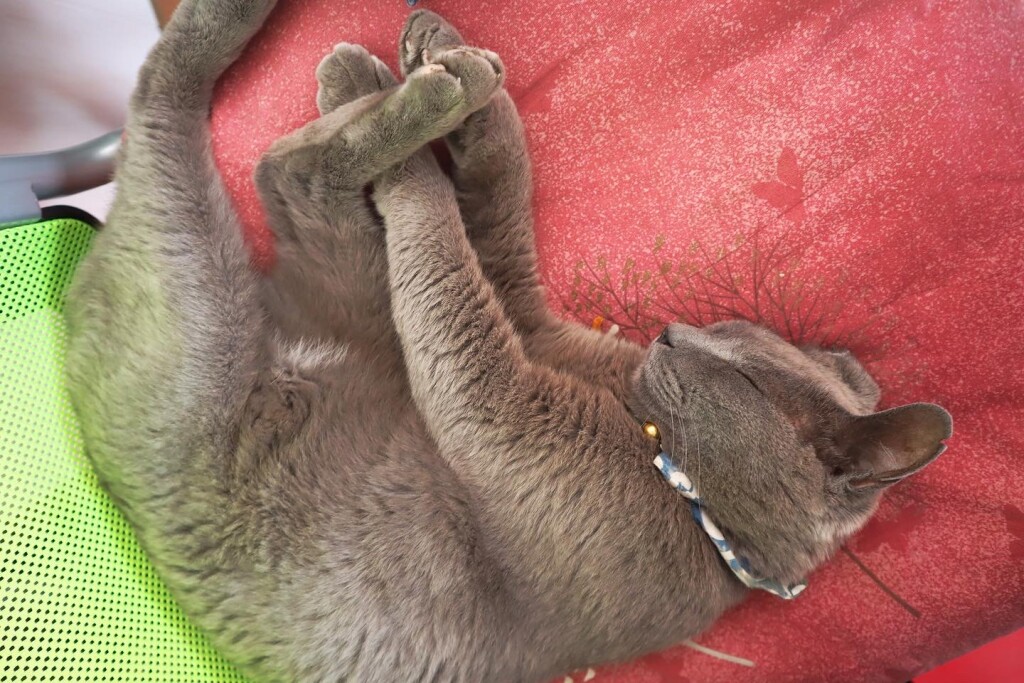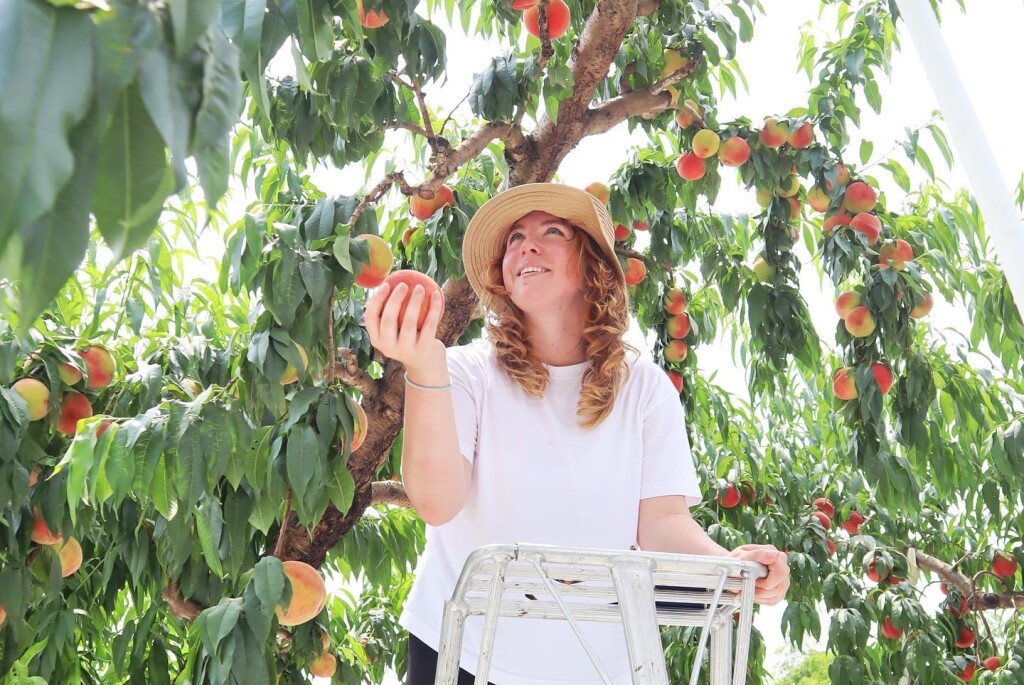
Satou Yukie, a staff member from Fukushima City’s Marusei Orchard is passionate about what she does, and it shows. Pulling up in her bright pink mini truck, wearing her bright pink staff shirt she made quite the entrance. We were ushered in to sit in her office to talk a bit about the orchard before we went to take photos and videos.
The office space only had a few chairs so we sat scattered across the room. We might’ve moved the chairs closer, but one staff member was dozing off in a chair and we couldn’t disturb them. Said staff member sleeps throughout most of the work day but management lets it slide because they’re so cute. This is Umemiyatamasaburou, or Tama-chan for short, the name comes from the story of a wandering samurai of the same name. This little cat wandered up to the orchard one day a few years ago and has stuck around ever since, so now they are treated just like any other member of the staff. In the afternoons she likes to wander the orchards, and has been known to sneak onto tour busses… So keep an eye out for her mischief!

Satou-san showed us a map that revealed the size of the orchard to be a total of 10 hectares! The largest in Fukushima. 5 hectares are dedicated solely to peach production, in case you didn’t know, Fukushima peaches are quite famous in Japan for being incredibly delicious. The U.S. Olympic softball coach, Ken Erikson, couldn’t get enough of these during the Tokyo 2020 Olympics and that not only made national news but caused peaches to sell out in record time due to a record number of orders being made.
“Fruit is meant to be enjoyed with your eye, and then your taste buds!” She said with a smile. So, she led us off to the orchards to enjoy some peaches with our eyes and taste buds! The peaches are beautiful bright reds and pinks, looking like beautiful decorations. She told us the peaches that get ripe and delicious sooner are those close to the trunk, next thing we know she is on a ladder and handing us a few peaches. One peach had a tiny bite mark from a bird. Satou-san said that that one would be the sweetest, the birds know these things!

After washing, peeling, and cutting off the area where the tiny bite had been taken, we got our first taste. It was incredibly soft and sweet. The birds really do know what’s up!
The other peaches had no tiny bite marks, but they were just as delicious! They were a bit firmer and the taste was again, incredible. When you visit Marusei orchard you can eat as many fruits as you like in the set time, I managed to eat two! I definitely could’ve eaten more, but I was saving space for something special...
On site, there is a little café called Mori no Garden where you can try incredible parfaits made with fresh, seasonal fruit. The peach parfait was absolutely incredible, and I now have unrealistic expectations for fruit eating. It will be hard to beat the level of amazing that is Marusei Orchard’s fruits.
Walking through the orchards, it’s fun to take a look at the fruit trees that are out of season, it’s so cute to see the tiny baby fruits that will soon grow into something delicious! The area of the orchard is designed to hard something to see no matter the season with a variety of fruits and flowers that make a visit here truly exceptional. After eating your fill of delicious fruits, you can stroll around the grounds and relax.

At the front desk where you rented your buckets and knives for fruit picking, you also need to return them. You can buy any fruits that picked but couldn’t eat, and you can also buy some already picked fruits. There are some really funny warning signs to remind you to keep your hands to yourself, but it goes without saying don’t touch or squeeze the fruits!
The orchard has such a fun atmosphere where you can tell how much the staff really enjoy working there, staff members have even DIYed little fruit parfait models, and they also collect the beetles they find in the orchard and save them for children to adopt as pets. Much kinder than getting rid of bugs with pesticides that’s for sure.
Click here for more information about fruit picking in Fukushima!







